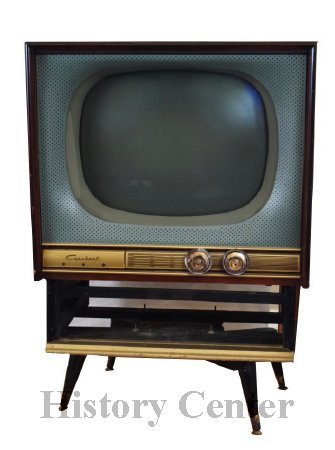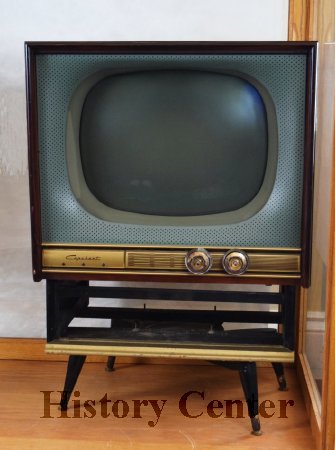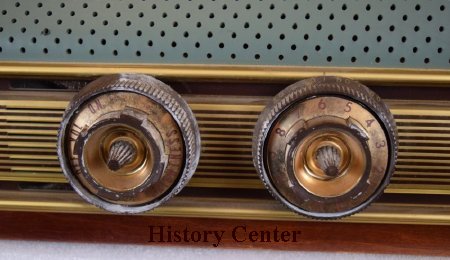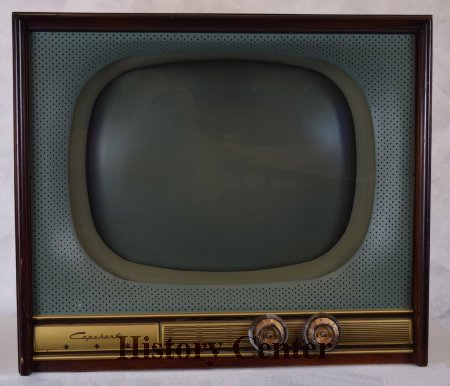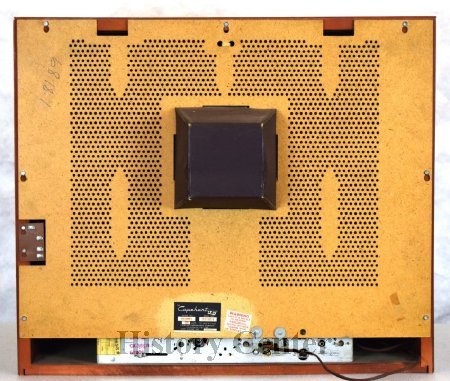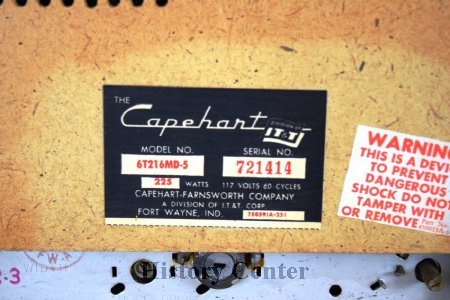Date:
1955
Title:
Capehart-Farnsworth Co. Television
Description:
At just fifteen years old, Philo T. Farnsworth (1906-1971), "the father of television," astonished his high school science teacher with his idea of how to transmit images over long distances. Just five years later, in 1927, he transmitted his first image (a black triangle on a piece of clear glass) to a receiver in an adjacent room. Further development through the 1930s, led to improved tube designs and better television images. By the time he established the Farnsworth Radio and Television Corporation in 1938, the basic elements of modern television were well established. In 1939, Farnsworth was seeking a first-rate cabinet and electronic shop, which he found at the Capehart Automatic Phonograph Company. He acquired the assets of the Capehart operation in Fort Wayne and moved his company here from California. He retained the Capehart brand name because the former company was well known for its high quality radio-phonographs and patented coin-operated record players called "Jukeboxes." Early experimental broadcasts were demonstrated to Fort Wayne audiences but production of retail units by the Farnsworth corporation was delayed by World War II. Most production changed from military electronics after the war to televisions, radios and phonographs made under the Farnsworth and Capehart brand names. When the Farnsworth Corporation was sold to International Telephone & Telegraph (ITT) in 1949, Philo became director of their research corporation and consultant to the Industrial Laboratories in Fort Wayne, a position he held until retirement in 1967. During the last years with ITT Farnsworth was conducting research on generating electricity using atomic fusion. At the time of his death in March 1971, he had been granted 165 patents. This tabletop model was produced by the Capehart-Farnsworth division of ITT. This tube television set, Model 6T216 MD-S, was manufactured locally around 1955. Channels were changed and volume was adjusted manually by turning the two dials on the front of the cabinet.

